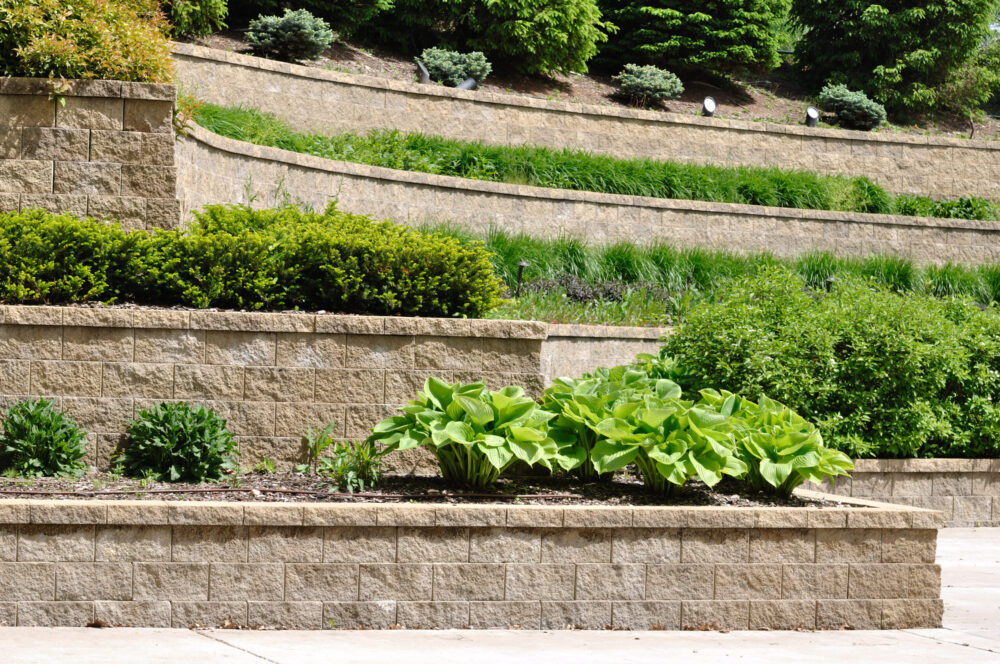You might need a retaining wall for several reasons, such as to reduce a slope in your yard or protect a road or building from an area that is prone to landslides. There are several different types of retaining walls – some can be built using precast concrete, and some can’t.
Keep in mind that the soil type will be a factor when picking a retaining wall, so you need to be sure you are working with the right people when designing your wall. Unlike other precast concrete companies, at American Precast Inc., we offer turnkey services, so we are able to handle your retaining wall from concept to completion.
Here are the four most common retaining walls you may want to consider.
Gravity Precast Retaining Walls
A gravity retaining wall is a large mass of precast concrete. The wall uses its own weight to hold back the weight of the ground. Sometimes you might have timber, soil, steel, or polymer mesh reinforcement behind the wall to help hold the ground back. Because a large amount of concrete is usually needed to hold back the weight of the soil, these types of concrete retaining walls will be much thicker than others.
One of the most common gravity walls made using precast concrete is a crib wall. A crib wall is a cage made from precast concrete (somewhat like a baby’s crib) that is filled with some sort of heavy, free-draining material like sand or soil.
Masonry Retaining Wall Blocks
Traditional precast concrete panels aren’t used with masonry retaining walls. Masonry walls are built using blocks – typically bricks or concrete retaining wall block – that are stacked one on top of the other. This is also a gravity retaining wall, which means it will have the strength of gravity retaining walls.
Masonry retaining walls have the advantage of having a more attractive look than other retaining wall designs. If that is a look you want to aim for using precast concrete, that can be achieved in less installation time. The precast concrete gravity or cantilever retaining wall can easily be formed to look like brick or stones.
Sheet Piled
Sheet pile walls are typically panels that are driven into the ground using a hammer or vibration. These aren’t very commonly used for permanent structures, and they are most often used temporarily on construction sites. The piles need to be driven far into the ground – around 2/3rds of the total length needs to be underground.
This type of retaining wall can’t be made from precast concrete as the piles need to be made from something less brittle like steel, fiberglass, vinyl, wooden planks, or plastic planks.
If you are looking for a retaining wall for your home or business and need a more permanent solution that will last for years to come, a precast retaining is a much better option.
Cantilever
Cantilever retaining walls are one of the slimmest and most elegant options. These retaining walls are often shaped like an upside-down “T” with the bottom buried under the ground as a structural footing. Other shapes can be used if needed. The wall is most commonly made with rebar reinforced precast concrete to ensure a strong wall that will last.
Shortwing walls can be added to the retaining wall as a buttress to increase the resistance force of the wall. Cantilever retaining walls will be able to hold back the same volume of soil as a gravity retaining wall but using much less material.
Contact American Precast Concrete For Retaining Wall Design & Wall Installation
If you need a retaining wall, precast concrete is your best option. With a precast concrete retaining wall, you have more control over how it looks, plus you get a wall that will be durable and lost for years. Give American Precast Concrete, Inc. a call today for a free custom estimate. Plus, when you deal with us, we will handle the entire process of your wall systems’ construction, from the design to wall installation.







